Yi-Shan Lin
New Metrics to Evaluate the Performance and Fairness of Personalized Federated Learning
Jul 28, 2021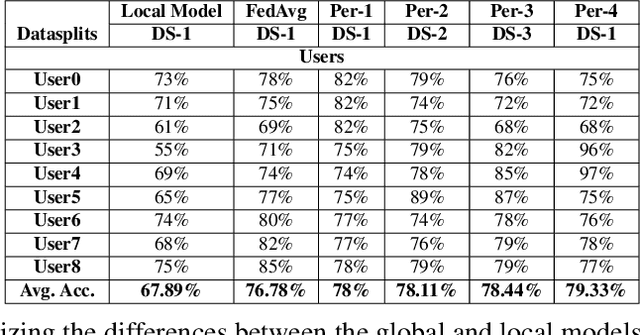

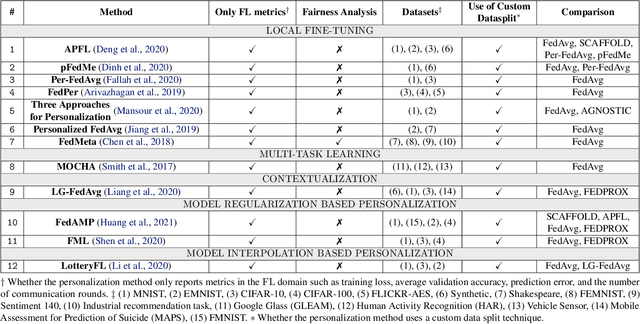

Abstract:In Federated Learning (FL), the clients learn a single global model (FedAvg) through a central aggregator. In this setting, the non-IID distribution of the data across clients restricts the global FL model from delivering good performance on the local data of each client. Personalized FL aims to address this problem by finding a personalized model for each client. Recent works widely report the average personalized model accuracy on a particular data split of a dataset to evaluate the effectiveness of their methods. However, considering the multitude of personalization approaches proposed, it is critical to study the per-user personalized accuracy and the accuracy improvements among users with an equitable notion of fairness. To address these issues, we present a set of performance and fairness metrics intending to assess the quality of personalized FL methods. We apply these metrics to four recently proposed personalized FL methods, PersFL, FedPer, pFedMe, and Per-FedAvg, on three different data splits of the CIFAR-10 dataset. Our evaluations show that the personalized model with the highest average accuracy across users may not necessarily be the fairest. Our code is available at https://tinyurl.com/1hp9ywfa for public use.
What Do You See? Evaluation of Explainable Artificial Intelligence Interpretability through Neural Backdoors
Sep 22, 2020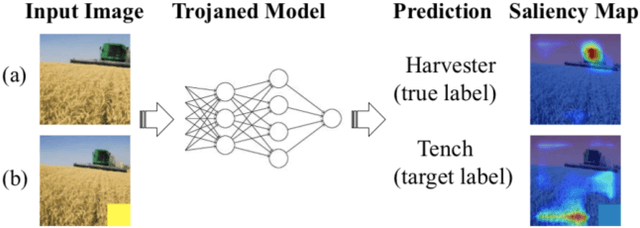
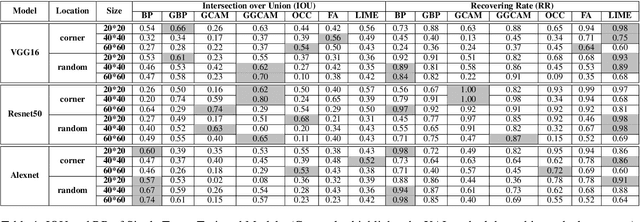
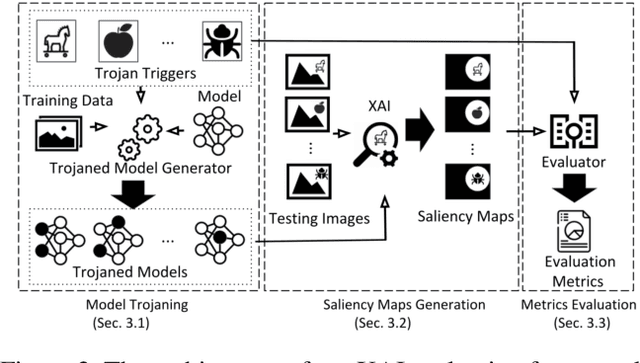
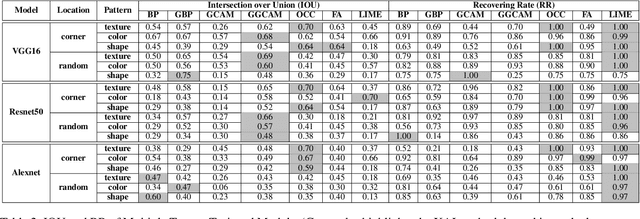
Abstract:EXplainable AI (XAI) methods have been proposed to interpret how a deep neural network predicts inputs through model saliency explanations that highlight the parts of the inputs deemed important to arrive a decision at a specific target. However, it remains challenging to quantify correctness of their interpretability as current evaluation approaches either require subjective input from humans or incur high computation cost with automated evaluation. In this paper, we propose backdoor trigger patterns--hidden malicious functionalities that cause misclassification--to automate the evaluation of saliency explanations. Our key observation is that triggers provide ground truth for inputs to evaluate whether the regions identified by an XAI method are truly relevant to its output. Since backdoor triggers are the most important features that cause deliberate misclassification, a robust XAI method should reveal their presence at inference time. We introduce three complementary metrics for systematic evaluation of explanations that an XAI method generates and evaluate seven state-of-the-art model-free and model-specific posthoc methods through 36 models trojaned with specifically crafted triggers using color, shape, texture, location, and size. We discovered six methods that use local explanation and feature relevance fail to completely highlight trigger regions, and only a model-free approach can uncover the entire trigger region.
Interactive Learning for Identifying Relevant Tweets to Support Real-time Situational Awareness
Aug 01, 2019



Abstract:Various domain users are increasingly leveraging real-time social media data to gain rapid situational awareness. However, due to the high noise in the deluge of data, effectively determining semantically relevant information can be difficult, further complicated by the changing definition of relevancy by each end user for different events. The majority of existing methods for short text relevance classification fail to incorporate users' knowledge into the classification process. Existing methods that incorporate interactive user feedback focus on historical datasets. Therefore, classifiers cannot be interactively retrained for specific events or user-dependent needs in real-time. This limits real-time situational awareness, as streaming data that is incorrectly classified cannot be corrected immediately, permitting the possibility for important incoming data to be incorrectly classified as well. We present a novel interactive learning framework to improve the classification process in which the user iteratively corrects the relevancy of tweets in real-time to train the classification model on-the-fly for immediate predictive improvements. We computationally evaluate our classification model adapted to learn at interactive rates. Our results show that our approach outperforms state-of-the-art machine learning models. In addition, we integrate our framework with the extended Social Media Analytics and Reporting Toolkit (SMART) 2.0 system, allowing the use of our interactive learning framework within a visual analytics system tailored for real-time situational awareness. To demonstrate our framework's effectiveness, we provide domain expert feedback from first responders who used the extended SMART 2.0 system.
 Add to Chrome
Add to Chrome Add to Firefox
Add to Firefox Add to Edge
Add to Edge